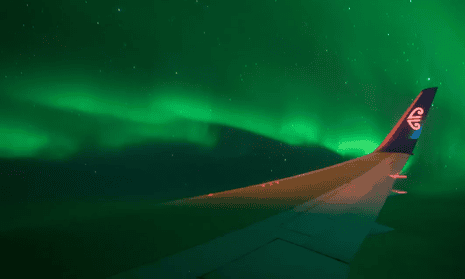The first commercial flight to view the Aurora Australis landed in New Zealand early on Friday, with 130 star-struck passengers sharing the experience on social media.
The eight-hour charter flight took off from the South Island on Thursday and flew to a latitude of 62 degrees south, where organisers said passengers were guaranteed a view of the aurora.
“Our lives are forever altered by this incredible experience and we are eternally grateful to have been a part of this remarkable event”, said passenger Roz Charlton on Facebook, as others shared their pictures under the hashtag #flighttothelights.
“We’ve travelled two-thirds of the way to the south pole, seen an incredible display of the southern lights, got lovely pictures and were home in time for breakfast,” the organiser, Dr Ian Griffin, told New Zealand’s TVNZ.
Ever wondered what an aurora australis looks like from 60 South from a Boeing 767? Wonder no more… #flighttothelights pic.twitter.com/d6BamHWgdi
— Ian Griffin (@iangriffin) March 23, 2017
The flight tickets were priced at NZ$4,000 for economy and $8,000 for business class aboard the Boeing 767, which returned to Dunedin.
Rafael, a Spanish tourist from Mallorca, said he saw the flight advertised online and decided he needed to go “on this adventure”.
Given the flight’s popularity, organisers say they are planning a second one next year.
Aurora Australis and its northern counterpart Aurora Borealis occur when the Earth’s magnetic field interacts with electrically charged particles emitted by the sun. In December 2015, Tasmanians were able to to see the aurora’s vivid green and purple lights from as far north as Hobart.
Mark Hathaway, a TVNZ reporter on board the flight, said passengers spent roughly four hours of the flight time viewing the aurora.
“A lot of people were like kids at Christmas,” he said.
This is the moon with an aurora 60 degrees south of Earth’s equator shot from #flighttothelights AKA @FlyAirNZ 1980 #aurora #auroraaustralis pic.twitter.com/aU0AayZq05
— Ian Griffin (@iangriffin) March 23, 2017

Comments (…)
Sign in or create your Guardian account to join the discussion